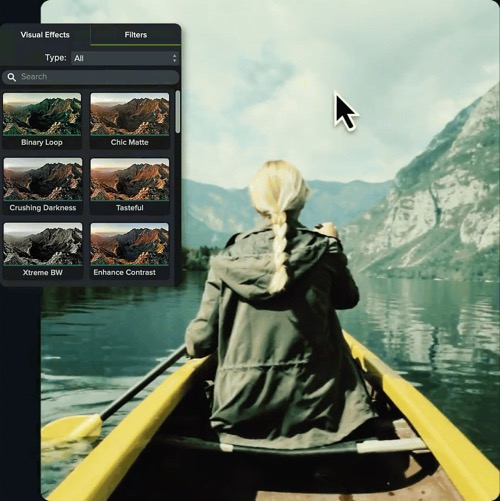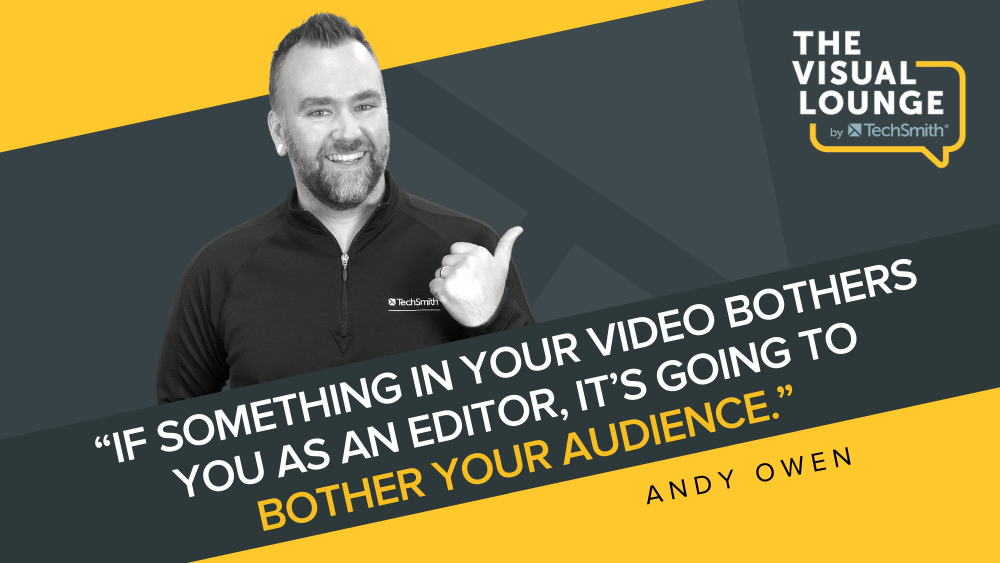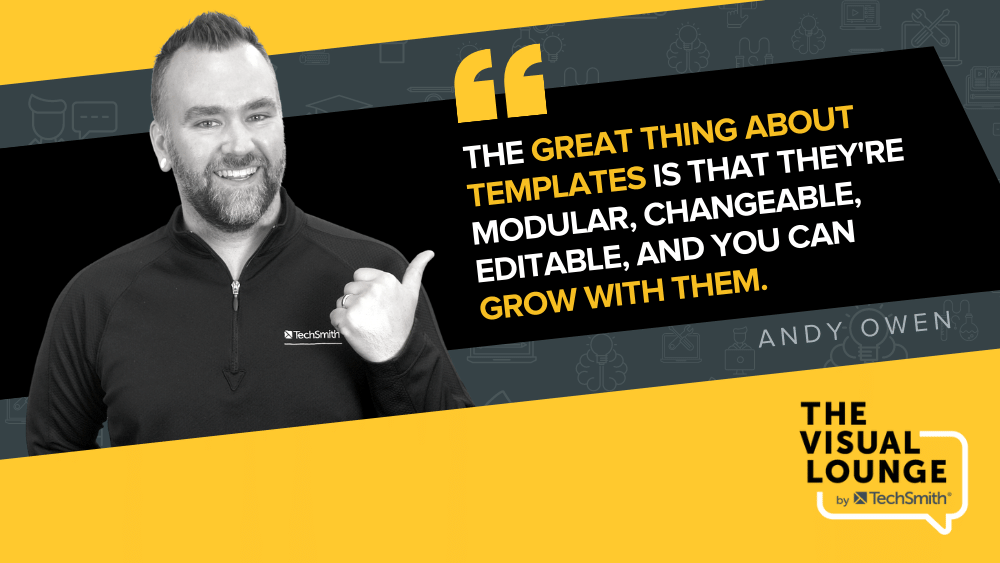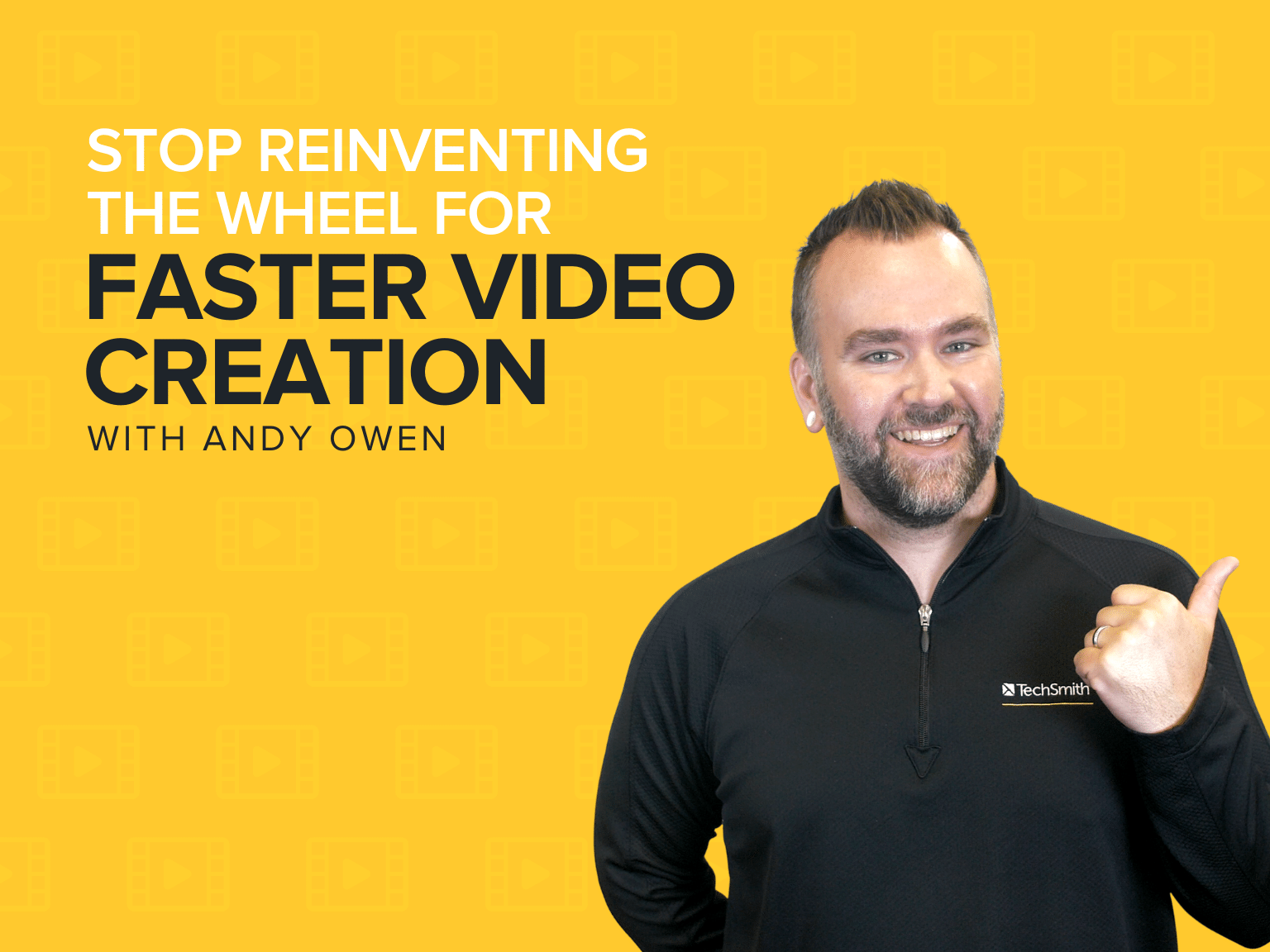Creating videos can be a work-intensive process – especially when you’re doing everything from scratch.
But it doesn’t need to take eons to come up with a well-rounded video, and that’s what Andy Owen, the Social Engagement and Video Manager at TechSmith, discusses in this episode of The Visual Lounge.
As Andy explains, recreating every element of your video from scratch is just not practical as your career progresses, it’s important for content creators to embrace the efficiency that comes with templatizing in order to make the most of their time.
Want to create videos faster?
Camtasia has a bunch of included templates and assets that help you get started. Plus, it’s beginner-friendly, so you’ll be making videos faster than you think!
Get started free!
Andy also discusses various ways to tap into your creativity while staying consistent with templates. As a bonus, he shares a few templates that he uses in Camtasia.
What to consider before making a video
Before we dive into the nitty-gritty of whether you should reinvent the wheel with your videos or not, Andy says you need to answer one vital question…
Do you really need to make a video?
It’s easy to believe that the most important parts of video creation are done during production or post-production, but it’s actually this brainstorming stage that takes the cup.
Sometimes video isn’t the right medium. Perhaps the information could be presented better as a PDF document or a graphic. While it’s cool to see things in video form, it’s not always the best way to get your message across. In fact, it’s one of the most time-consuming ways of doing it.
If you’ve thought really hard about it and decided that a video is the right way to go, then Andy has another important question you should ask yourself.
What do you care about, and if you made a video about it, would you watch it? You can’t very well create a video about something you have zero interest in because that disinterest is bound to translate.
So, start from your interests, then graduate to what your audience is interested in.
Ultimately, the content is for them, so you really need to dig into factors like niche and demographics. Both these things feed into attention span and interests.
While every member of your audience is a unique person, it’s important to learn more about what they care about, generally speaking. That way, you can create a video that meets their needs as closely as possible.
The bottom line is that knowing your audience well is one of the most important steps to making a video that hits the nail on the head.
Benefits of creating a template for your work
If you create videos, then you already know that it’s not the most straightforward process.
When you’re not designing titles, you’re probably creating graphics, picking frames, or adding in your screen recording content. Of course, all of these offer a great opportunity to up your skills and get some practice, but they aren’t particularly time efficient.
When juggling all these different elements, Andy says that it’s sometimes better to make a template that pieces everything together. By doing so, you can save valuable time and energy.
How to balance consistency and creativity
It’s true that using templates takes away a bit of that creative edge you have when creating videos. If you’ve got a set intro and outro and a templated script, it can feel like you’re doing the same thing over and over again.
However, Andy says there’s still room to satisfy the creative within. It’s just not going to be as elaborate as crafting a whole video from scratch. This is especially true when it comes to tutorial videos or learning materials of any kind. You can add elements of “art,” but at the end of the day, it’s more about the lesson and how you get your point across that matters most.
The editing process is also a great creative outlet in itself. Even when you’re using templates to speed things up, there’s still room to clean things up in editing and add a little bit of flair in the process.
Altogether, you shouldn’t think of templates as tools that stifle your creativity. In fact, a benefit of automating even part of your work is that it eventually frees you up to be creative in areas where it can be most impactful.
So, it’s not one or the other when it comes to consistency and creativity. In fact, people tend to be more creative when they have something to build on as opposed to going with the flow.
Should you create a template for your video scripts?
According to Andy, “scripting templates is huge!”
But scripting isn’t just about outlining every single word you’re going to say in the video. What it does involve is creating a sort of structure to build the rest of your video on. It also ensures that you have a tried and tested framework on how to speak to the particular audience you’re targeting.
Once you’ve done the research and you’re clear on what your audience is interested in, then it’s easier to stick to what you know will draw them in.

The most crucial part of a video is the beginning. It sets the tone for everything, but it’s so easy to get carried away adding fluff. Andy stresses the importance of scripting down relevant information because it can make all the difference between captivating and losing your viewers. It also means you’re far less tempted to add fluff.
The same thing goes for the end of a video, especially if there’s a call to action right you want to highlight. Andy recommends highlighting the CTA to ensure that people actually know what you’d like them to do.
Using a template for your scripts means you don’t have to start from scratch every single time. You could easily use one template to build seven videos and tweak the little details as you deem fit.
Some of the other things you can templatize include:
- Logos
- Transitions
- Audio points
- Title cards
- Screen recordings
- Intros and outros
- Music
- And so much more!
The great thing about templates is that though they’re pretty consistent, they aren’t set in stone. There’s room to move things around every now and then for a breath of fresh air or simply to optimize your template for your audience.

For more tips on how to create value-packed, time-efficient videos, check out TechSmith Academy.



Share